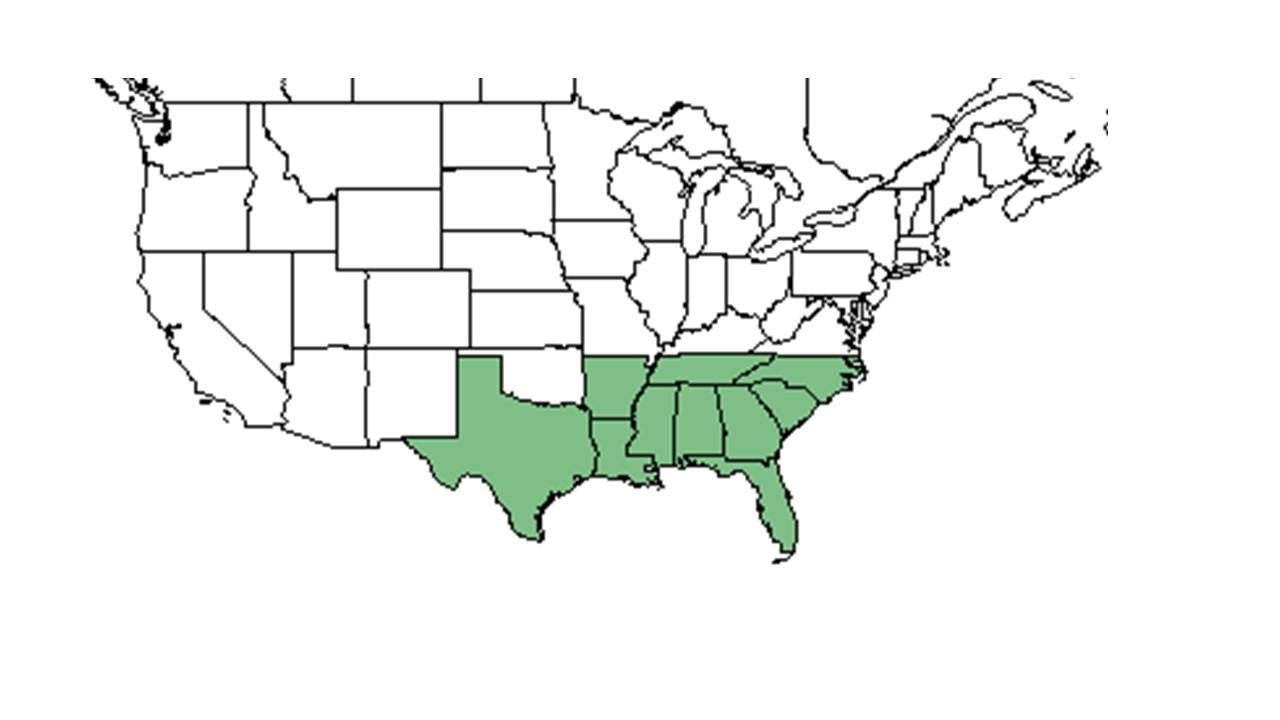Difference between revisions of "Polygala nana"
Laurenloria (talk | contribs) (→Seed dispersal) |
|||
| Line 37: | Line 37: | ||
===Seed dispersal=== | ===Seed dispersal=== | ||
| − | + | This species disperses by explosion mechanisms or by ants. <ref>Kirkman, L. Katherine. Unpublished database of seed dispersal mode of plants found in Coastal Plain longleaf pine-grasslands of the Jones Ecological Research Center, Georgia.</ref> | |
<!--===Seed bank and germination===--> | <!--===Seed bank and germination===--> | ||
<!--===Fire ecology===--> <!--Fire tolerance, fire dependence, adaptive fire responses--> | <!--===Fire ecology===--> <!--Fire tolerance, fire dependence, adaptive fire responses--> | ||
| Line 43: | Line 43: | ||
<!--===Use by animals===--> <!--Herbivory, granivory, insect hosting, etc.--> | <!--===Use by animals===--> <!--Herbivory, granivory, insect hosting, etc.--> | ||
<!--===Diseases and parasites===--> | <!--===Diseases and parasites===--> | ||
| + | |||
==Conservation and management== | ==Conservation and management== | ||
==Cultivation and restoration== | ==Cultivation and restoration== | ||
Revision as of 19:08, 17 November 2016
| Polygala nana | |
|---|---|
Error creating thumbnail: Unable to save thumbnail to destination
| |
| Photo taken by Gil Nelson | |
| Scientific classification | |
| Kingdom: | Plantae |
| Division: | Magnoliophyta – Flowering plants |
| Class: | Magnoliopsida – Dicotyledons |
| Order: | Polygalales |
| Family: | Polygalaceae |
| Genus: | Polygala |
| Species: | P. nana |
| Binomial name | |
| Polygala nana (Michx.) DC. | |

| |
| Natural range of Polygala nana from USDA NRCS Plants Database. | |
Common names: Candyroot, Dwarf milkwort
Contents
Taxonomic notes
Synonyms: Pilostaxis nana (Michaux) Rafinesque; Pylostachya nana (Michaux) Rafinesque
Description
"Herbs, whorled or alternate rarely opposite, entire leaves. Flowers lavender, pink, white or yellow, in racemes or spikes, terminating the branches or in terminal corymbs. Flowers perfect, zygomorphic, with 3 small sepals, frequently one of these slightly larger than the others, and 2 larger petaloid sepals (wigs). The 3 petals are united into a tube, 3-lobed at apex, the 2 lateral lobes usually the longer, the center lobe usually lacerate, often thicker in texture; stamens 6-8, united to the corolla tube in 2 rows. Capsule 2 –locular, with one seed in each locule. Seeds dark brown or black, ellipsoid or ovoid, rarely globose, 0.5-3 mm long, usually densely pubescent. The genus has been divided into several genera none of which have distinct characteristics. Orange flowers turn pale yellow on drying, yellow ones bluish green; the pink or lavender ones remain the same color or fade slightly." [1]
"Similar to P. lutea. 3-15 cm tall, with leaves mostly confined to a basal rosette; stem leaves few. Flowers lemon yellow. Wings 7-8 mm long, long acuminate." [1]
Distribution
Ecology
Habitat
This species has been found in open, well-drained wiregrass-pine flatwoods and interdune swales growing on both dry and moist sands. [2] Observed species in sandhill longleaf pine habitat that has 1 to 3 year fire return intervals. Also seen near a cypress pond, about 1 to 2 feet from water’s edge of Pebble Hill Plantation C plots. (Michelle M. Smith – early summer 2014 and 2015).P. nana has also been found growing along the sides of highways and in the wetlands of clear cut areas. [2] Associated species include Pinus palustris and Aristida stricta. [2]
Phenology
Flowers in April. [2]
Seed dispersal
This species disperses by explosion mechanisms or by ants. [3]
Conservation and management
Cultivation and restoration
Photo Gallery
References and notes
- ↑ 1.0 1.1 Radford, Albert E., Harry E. Ahles, and C. Ritchie Bell. Manual of the Vascular Flora of the Carolinas. 1964, 1968. The University of North Carolina Press. 660. Print.
- ↑ 2.0 2.1 2.2 2.3 Florida State University Robert K. Godfrey Herbarium database. URL: http://herbarium.bio.fsu.edu. Last accessed: July 2015. Collectors: : Loran C. Anderson, Leon Neel, R. A. Norris, Robert K. Godfrey, Walter Kittredge, R. Komarek, Lisa Keppner. States and Counties: Florida: Franklin, Gadsden, Leon, Wakulla, Washington. Georgia: Grady, Thomas. Compiled by Tall Timbers Research Station and Land Conservancy.
- ↑ Kirkman, L. Katherine. Unpublished database of seed dispersal mode of plants found in Coastal Plain longleaf pine-grasslands of the Jones Ecological Research Center, Georgia.
